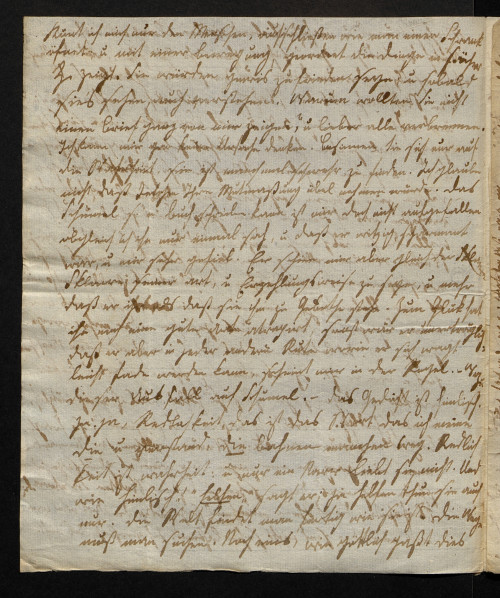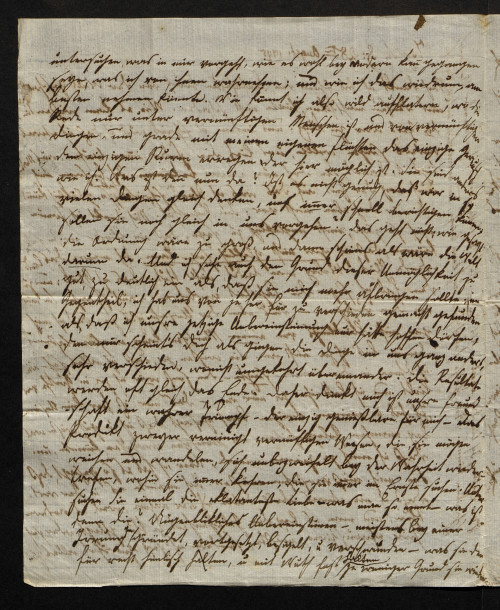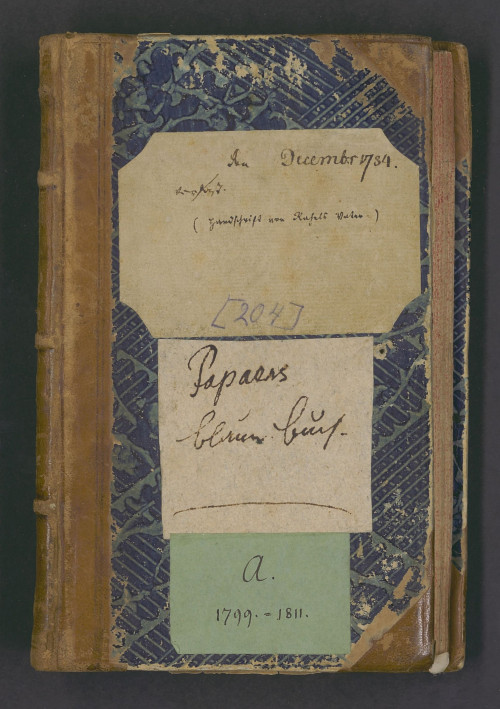2nd chapter: Rahel Levin Varnhagen’s Intimate Writing
In 1793, Rahel Levin Varnhagen and the physician and writer David Veit (1771–1814) began a correspondence-based relationship that was intense in many ways. Not only did they exchange many long letters, but they discussed highly personal matters from the start: passion and pain, the idea of love and the essence of friendship, self-knowledge versus knowledge of others and the merits and weaknesses of each other’s writing. Veit was the same age as Levin Varnhagen and like her came from a Jewish family. She thus saw him as an equal, as an educated, introspective, astute man with literary talent who shared her thirst for knowledge and her intellectual passion for literature, language, philosophy and aesthetics. In one of her first letters, she pressed him to “always be completely honest” while not abandoning the ‘determination to understand’. “Not understanding”, she wrote, “is not an option!” (2 November 1793). She took upon herself the ambitious commitment to always be sincere, outspoken and even rigorously truthful so she could understand others as well as herself and create a close bond of trust. This became the condition for her communication with Veit and led to their first conflict, which occurred after Veit admitted that he would rather burn his 21 letters from “Rahel” than show them to another person. Only when Veit backpedalled and speculated that third parties would be indifferent to and not understand their intimate correspondence did their friendly written conversation on the necessity and challenges of “speaking truthfully” continue.
Weitere Stationen
-

Rahel Levin Varnhagen (1771 – 1833), Brief an David Veit (1771–1814) in Jena, Berlin, 1. Juni 1795
2 Seiten (faksimiliert), 23 x 19 cm Sammlung Varnhagen, Biblioteka Jagiellońska, Krakau
-

Rahel Levin Varnhagen (1771 – 1833), Brief an David Veit (1771–1814) in Jena, Teplitz, 28. August 1795
1 Doppel- und 1 Einzelseite (faksimiliert), 23,5 x 19 cm Sammlung Varnhagen, Biblioteka Jagiellońska, Krakau
-

„Tagebuch A“
Buchdeckel und Eintrag vom März 1799: „Wenn man nur immer die Geschiklichkeit hätte, wahr seyn zu können …“